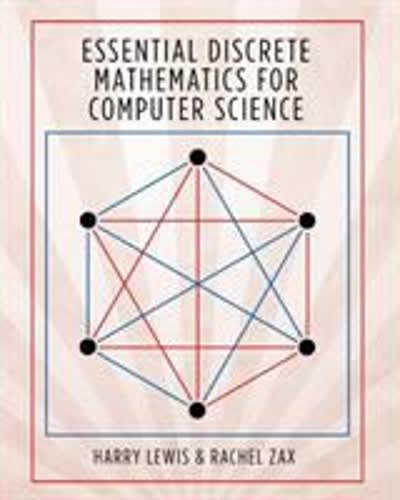Question
1.We have seen that the standard deviationmeasures the spread of a data set about the mean. Chebyshev's inequality gives an estimate of how well the
1.We have seen that the standard deviationmeasures the spread of a data set about the mean.Chebyshev's inequalitygives an estimate of how well the standard deviation measures that spread. One consequence of this inequality is that for every data set at least 75% of the data points lie within two standard deviations of the mean, that is, between2
and+ 2(inclusive).
For example, if= 20
and= 5,
then at least 75% of the data are at least2025 = 10
and at most20 + 25 = 30.
Consider the following data:6, 12, 12, 12, 12, 12, 12, 21. Find the mean and the standard deviation. (Round your answers to one decimal place.)
2.We have seen that the standard deviationmeasures the spread of a data set about the mean.Chebyshev's inequalitygives an estimate of how well the standard deviation measures that spread. One consequence of this inequality is that for every data set at least 75% of the data points lie within two standard deviations of the mean, that is, between2
and+ 2
(inclusive). For example, if= 20
and= 5,
then at least 75% of the data are at least2025 = 10
and at most20 + 25 = 30.
Our statement of this result says "at least 75%," not "exactly 75%." What percent of the following data points actually lie within two standard deviations of the mean?
3.We have seen that the standard deviationmeasures the spread of a data set about the mean.Chebyshev's inequalitygives an estimate of how well the standard deviation measures that spread. One consequence of this inequality is that for every data set at least 75% of the data points lie within two standard deviations of the mean, that is, between2
and+ 2
(inclusive). For example, if= 20
and= 5,
then at least 75% of the data are at least2025 = 10
and at most20 + 25 = 30.
We have 1200 lightbulbs in our building. Over a 10-month period, we record the number of bulbs that burn out each month. The result is the data list26, 25, 29, 31, 18, 23, 32, 22, 15, 16.
(a) What is the average number of bulbs that burn out each month? (Round your answer to the nearest whole number.)
bulbs
(b) What is the standard deviation of these data? Round the standard deviation to one decimal.
(c) Use Chebyshev's inequality and your answers to parts (a) and (b) to estimate how many replacement bulbs you should keep on hand so that for at least 75% of the months you don't have to acquire additional replacement bulbs. (Round your answer up to the nearest whole number.)
bulbs
4.In a study of500 men, diastolic blood pressure was found to be approximately normally distributed, with a mean of82millimeters (mm)of mercury and standard deviation of 10 millimeters.
Use the 68-95-99.7% rule to determine what percentage of the test group had a diastolic pressure between52millimeters
and112millimeters of mercury.
5.The average maximum monthly temperature in Campinas, Brazil is 29.9 degrees Celsius. The standard deviation in maximum monthly temperature is 2.31 degrees. Assume that maximum monthly temperatures in Campinas are normally distributed.
What percentage of months would have a maximum temperature of32degrees or higher? Round your answer to one decimal place.
Step by Step Solution
There are 3 Steps involved in it
Step: 1

Get Instant Access to Expert-Tailored Solutions
See step-by-step solutions with expert insights and AI powered tools for academic success
Step: 2

Step: 3

Ace Your Homework with AI
Get the answers you need in no time with our AI-driven, step-by-step assistance
Get Started


